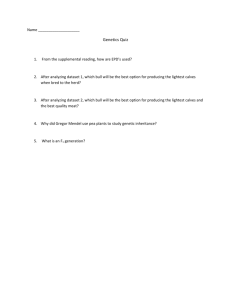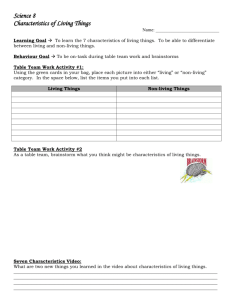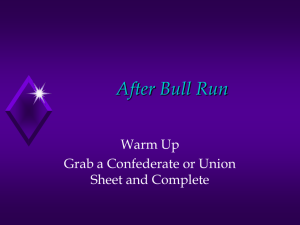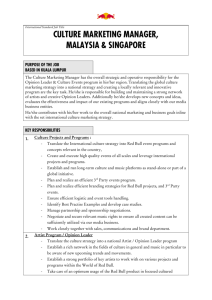RED BULL
advertisement
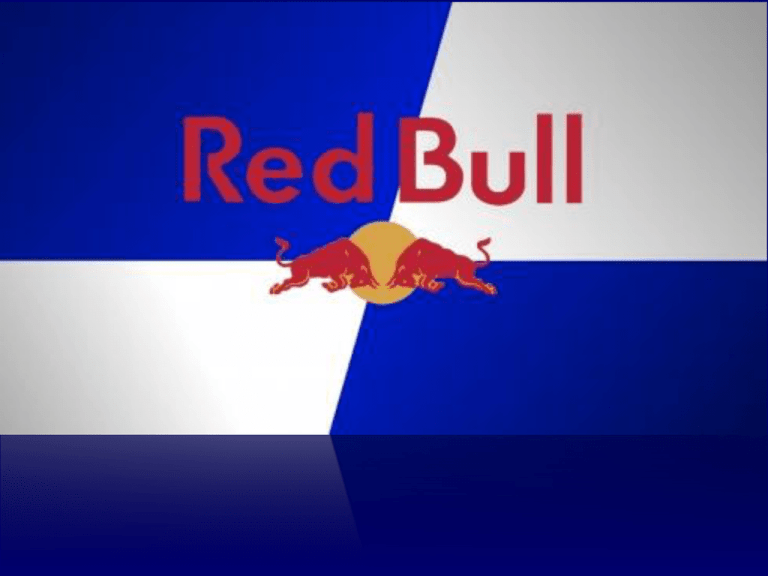
History of Red Bull • 1982 – Dietrich Mateschitz, while visiting Asia, started drinking “tonic drinks”, which were very popular in East Asia • 1984 – Mateschitz founded Red Bull in Austria, fine-tuning the already existing Krating Dang recipe for a European market • 1987 – Mateschitz started selling Red Bull Energy Drink History of Red Bull • To date, over 30 billion cans of Red Bull have been consumed worldwide, in over 160 countries • Red Bull first expanded to foreign markets in 1989 to Singapore, 1992 to Hungary, 1994 to Germany, 1995 in the UK, and finally 1997 to the USA, starting in California Growth of Red Bull Globally • • • • • • • 1987: Available in 1 country 1992: Available in 3 countries 1995: Available in 15 countries 1998: Available in 45 countries 2001: Available in 73 countries 2004: Available in 124 countries 2009: Available in 160 countries What is It? • The key ingredients of Red Bull are taurine (1000 mg), glucuronolactone (600 mg), and caffeine (80 mg) in a 250-mL can. The product also contains sweeteners, such as sucrose and glucose. • All ingredients are synthetically produced by pharmaceutical companies to ensure the highest quality. The composition and ingredients are uniform throughout the world, except for slight variations in vitamin content due to national regulations Market Background Energy drink fighting arena is very aggressive especially for on ground activities in order to own TOM awareness as well as sales over time Consumer target is wide from young adult to much older age, 54. However, key players tend to build equity among younger groups then retain loyalty over time to sustain consumer base M150 is leading the category with more than 50% share. Krating Dang (REDBULL) is the runner up and it’s not easy to overthrown M150 M150 has invested behind the brand via ATL that aims to the younger groups (1525 years old males). BTL is segmented in order to attract across all age groups Brand message are mainly about moral support shadowed with energy boosting mood and tone Product feature Sold in a small brown bottle. The blue label with the bulls running across. Brand name: KRATING = BULL DANG = RED Price tag 10 baht (33 cents) Lipo 6% CBD 10% Shark 6% 0.357 Wrangyer Looktung 2% 2% 1% With brand & strong distribution of M150 is able to dominate market with 55% share, followed by Krating Dang (RED BULL) and Carabao Dang respectively. M150 55% Krating Dang 18% Brand Positioning Urban Young 15+ Old 50+ Traditional Target Consumer Demographic Psychographic Male 18-40 yrs. Blue collar Urban lifestyle Income 5000-9000 baht ($170-$300 per month) Optimistic Determine Fight for a better thing Work hard to support their children education Target behaviors Hang out place Hyper market Modern trade Music Country, Blue, Local song Goods Food Road side restaurants Street stalls Take away foods Buy just what they need Seek out promotion Electronic appliances 2nd hand Fake item Target insight Focus on both themselves and other. Devote themselves to earn as much as they can for family. Must work hard to build a better life. The city means to reach their dream. Integrated Marketing Communication Brand Personality Teens Extreme Aggressive Adventure Active lifestyle Krating Dang (RED BULL) IMC quite to concern with Modern Image, especially in music marketing it focusing in 15 – 25 years olds only. However KTD keep adult age with Thai boxing. TVC Radio Promotion CSR Internet Sport Event Print advertise Music Event Billboard TVC Radio Promotion CSR Internet Sport Event Print advertise Music Event Billboard TVC Radio Promotion CSR Internet Sport Event Print advertise Music Event Billboard TVC Radio Promotion CSR Internet Sport Event Print advertise Music Event Billboard TVC Radio Promotion CSR Internet Sport Event Print advertise Music Event Billboard Target Market in US • 18 – 34 Males with an “on-the-go” or “extreme sports” lifestyle • 34% of 18-24 describe themselves as regular consumers of Energy Drinks • Around 50% of US College Students in 2009 consumed at least 1 Energy Drink a month for either an Energy Boost, to compensate for lack of sleep, or for boozing (Red Bull Vodka, Jaeger & Rockstar) Competitors in the US • Coca Cola – Full Throttle & Rockstar (Distribution Deal) • PepsiCo – Mountain Dew Amp & SoBe No Fear • Hansen Natural – Monster • Niche Energy Drinks (Low Calorie, Sugar Free, formulated for Women) The Cost • • • • Red Bull (8.3oz) @ Jackson’s : $2.29 Monster (16oz) @ Jackson’s: $2.39 Rockstar (16oz) @ Jackson’s: $2.19 Red Bull is 593% more expensive in the US, compared to Thailand • Red Bull is 84.7% more expensive, per oz, compared to Monster, 101.6% for Rockstar Red Bull Market Share Sales in 2009 21.1% Red Bull 42.6% 3.6% Monster (Hansen) Rockstar (Coke) Full Throttle (Coke) 6.9% Amp (PepsiCo) The Rest 11.4% 14.4% It gives you wiiings… • Red Bull’s aggressive and unique marketing strategy really helped it dominate the US market when it first came out • Cheap, Cheesy, Cartoon commercials we all remember • Massive sponsorship and expansion into the extreme sports market, which was also going through a huge boom when Red Bull was introduced to the US (Milk & Cookies) • Moved to a new ad campaign Sponsorship & POS • Bar’s and Nightclub’s have Red Bull coolers • Red Bull Flugtag, Air Race, Cliff Diving, X-Fighters (motocross), Crashed Ice, Rampage, Paperwings • Red Bull Records • Sponsored Professional Sports (Red Bull New York MLS, Red Bull Salzburg Austria, RB Leipzig Germany) • Two Formula 1 teams (Team Red Bull & Scuderia Toro Rosso). In 2010 Red Bull won the Constructor & Driver championship in Formula 1 Going Green • Over 4 billion aluminum can’s were sold last year • Red Bull tracks the can’s entire carbon footprint lifecycle • Reduced can weight, increased recycling rates • Increased can transportation by rail & sea, reducing/replacing road transportation wherever possible • Using ecologically efficient refrigerators & cooling agents (All coolers they purchase are ECO coolers whenever possible) Questions? Sources • http://www.redbullusa.com • http://onlinelibrary.wiley.com/doi/10.1111/j.1 541-4337.2010.00111.x/pdf • http://wps.prenhall.com/wps/media/objects/ 3357/3438371/chapter%20cases/tuckwell_cas e04.pdf • www.youtube.com • www.bevnet.com



